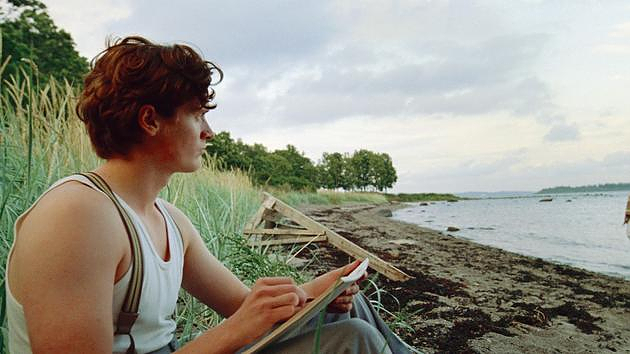Munch, his life rather than his work. Or rather the original mystery of his unique work which never ceases to surprise with its audacity, its X-ray lucidity and its Nordic spring freshness. She transformed her life (1863-1944), at its cruelest, from the dramas of her childhood to the violent failures of her loves, in a separate palette, at first dark like a symbolist tale, then lively and airy like a Gauguin between Brittany and the islands.
A tumultuous river of masterpieces which today brings glory to Norway, the Nasjonalmuseet and the Munchmuseet of Oslo in their brand new monuments. And the joy of the Musée d’Orsay in Paris which triumphed with its retrospective last winter. Rather than a documentary, the young Norwegian filmmaker Henrik Martin Dahlsbakken wanted to make “the first fiction adaptation on the big screen of the life of Edvard Munch”. The father of expressionism is played by four actors at four key moments in his life. In the shoes of Edvard Munch, so to speak.
The result is a mix of genres, in every sense of the word. There is Strindberg's theater in the country banquet which confronts the young Edvard Munch, milk complexion and red curls, with his first betrayal in love with Milly Thaulow, an emancipated woman who seduces and disdains him The camera follows the actor Alfred Ekker Strande walking along the Åsgårdstrand orchard on the edge of the fjord. We feel with it, in a subtle and acute way, the brevity of the beautiful days in these northern latitudes. She embodies the brevity of happiness and the illusion of the future. “I believed that it was the beginnings of happiness, it was happiness,” wrote Virginia Woolf. Only nature remains, a source of joy in the worst hours. There is dramatic behind closed doors, almost theater, in Munch's stay in 1908 with Dr. Jacobson in Copenhagen, where the artist discusses, analyzes and searches for himself like a modern man in search of himself. Fleeing the effects, Ola G. Furuseth lends her hollow cheeks and her inquisitive gaze to Munch, then on the edge of the precipice. It is poignant.
Also read: Edvard Munch, a painter in search of a soul
There is some offbeat extrapolation with the 30-year-old Munch, a revolutionary and hypersensitive artist who must face rejection in Berlin at the turn of the century. Henrik Martin Dahlsbakken transposes it into Berlin in the 1980s. At first disturbing, this anachronistic chapter sheds light on the artist's throes with a contemporary note which takes on its meaning through the text, a sort of timeless reflection on the human condition with a Mattis Herman Nyquist with an almost shaved head and a recessed body. There is finally some Goya-style grotesquery with the 80-year-old Munch, played by the queen of the Norwegian stage Anne Krigsvoll, stooped like a devil. We don't immediately see what's wrong with this funny face, but the solitude of the reclusive old man is palpable, like the scathing vivacity of his mind. These four Munchs form a kaleidoscope of contradictory emotions, filmed with all the vigor of this admirer of Martin Scorsese, Paul Thomas Anderson and Michael Haneke.
The Note of Figaro: 3/4

 Israel-Hamas war: Gaza between hope of truce and fear of Israeli offensive in the South
Israel-Hamas war: Gaza between hope of truce and fear of Israeli offensive in the South “Mom, Dad, please don’t die”: in the United States, a nine-year-old child saves the lives of his parents injured in a tornado
“Mom, Dad, please don’t die”: in the United States, a nine-year-old child saves the lives of his parents injured in a tornado War in Ukraine: Putin orders nuclear exercises in response to Macron and “Western leaders”
War in Ukraine: Putin orders nuclear exercises in response to Macron and “Western leaders” Mexico: the last moments of surfers found in a well, killed with a bullet to the head
Mexico: the last moments of surfers found in a well, killed with a bullet to the head A baby whose mother smoked during pregnancy will age more quickly
A baby whose mother smoked during pregnancy will age more quickly The euro zone economy grows in April at its best pace in almost a year but inflationary pressure increases
The euro zone economy grows in April at its best pace in almost a year but inflationary pressure increases Children born thanks to PMA do not have more cancers than others
Children born thanks to PMA do not have more cancers than others Breast cancer: less than one in two French women follow screening recommendations
Breast cancer: less than one in two French women follow screening recommendations “A potential environmental disaster”: Paris town hall opposes an oil drilling project in Seine-et-Marne
“A potential environmental disaster”: Paris town hall opposes an oil drilling project in Seine-et-Marne The governor of the Banque de France pleads for the development of French and European AI
The governor of the Banque de France pleads for the development of French and European AI Clariane (ex-Korian) announces a sale of its home hospitalization activities
Clariane (ex-Korian) announces a sale of its home hospitalization activities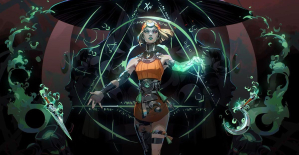 To everyone's surprise, the Hades 2 event video game is released in early access
To everyone's surprise, the Hades 2 event video game is released in early access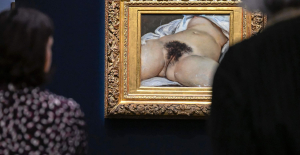 The Origin of the World, exhibited at the Center Pompidou Metz, target of an “artistic performance”
The Origin of the World, exhibited at the Center Pompidou Metz, target of an “artistic performance”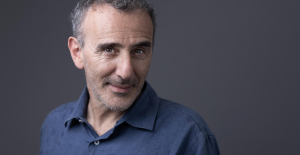 Threatened with death for having insulted the mobilized pro-Palestinian students, Élie Semoun files a complaint
Threatened with death for having insulted the mobilized pro-Palestinian students, Élie Semoun files a complaint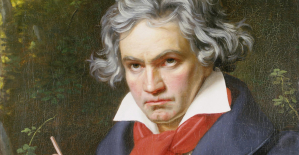 Vienna, Paris, Milan celebrate the 200th anniversary of Beethoven's 9th Symphony
Vienna, Paris, Milan celebrate the 200th anniversary of Beethoven's 9th Symphony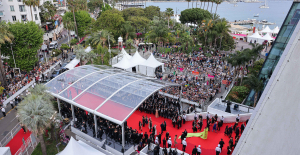 Cannes Film Festival: call for strike one week before opening
Cannes Film Festival: call for strike one week before opening Omoda 7, another Chinese car that could be manufactured in Spain
Omoda 7, another Chinese car that could be manufactured in Spain BYD chooses CA Auto Bank as financial partner in Spain
BYD chooses CA Auto Bank as financial partner in Spain Tesla and Baidu sign key agreement to boost development of autonomous driving
Tesla and Baidu sign key agreement to boost development of autonomous driving Skoda Kodiaq 2024: a 'beast' plug-in hybrid SUV
Skoda Kodiaq 2024: a 'beast' plug-in hybrid SUV The home mortgage firm rises 3.8% in February and the average interest moderates to 3.33%
The home mortgage firm rises 3.8% in February and the average interest moderates to 3.33% This is how housing prices have changed in Spain in the last decade
This is how housing prices have changed in Spain in the last decade The home mortgage firm drops 10% in January and interest soars to 3.46%
The home mortgage firm drops 10% in January and interest soars to 3.46% The jewel of the Rocío de Nagüeles urbanization: a dream villa in Marbella
The jewel of the Rocío de Nagüeles urbanization: a dream villa in Marbella Europeans: David Lisnard expresses his “essential and vital” support for François-Xavier Bellamy
Europeans: David Lisnard expresses his “essential and vital” support for François-Xavier Bellamy Facing Jordan Bardella, the popularity match turns to Gabriel Attal’s advantage
Facing Jordan Bardella, the popularity match turns to Gabriel Attal’s advantage Europeans: a senior official on the National Rally list
Europeans: a senior official on the National Rally list Blockade of Sciences Po: the right denounces a “drift”, the government charges the rebels
Blockade of Sciences Po: the right denounces a “drift”, the government charges the rebels These French cities that will boycott the World Cup in Qatar
These French cities that will boycott the World Cup in Qatar Foot: Italian football protests against a government project which aims to monitor club finances
Foot: Italian football protests against a government project which aims to monitor club finances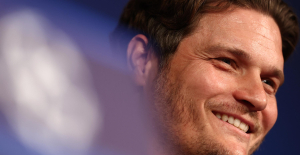 Champions League: “We are ready for anything,” warns Edin Terzic before PSG-Dortmund
Champions League: “We are ready for anything,” warns Edin Terzic before PSG-Dortmund Premier League: David Moyes to leave West Ham at end of season
Premier League: David Moyes to leave West Ham at end of season Transat CIC: Yoann Richomme winner in the wake of Tabarly, Poupon, Peyron, Desjoyeaux...
Transat CIC: Yoann Richomme winner in the wake of Tabarly, Poupon, Peyron, Desjoyeaux...